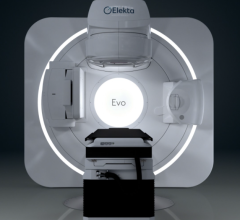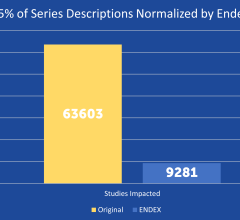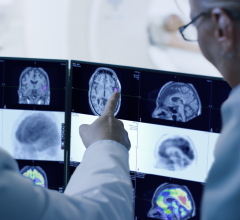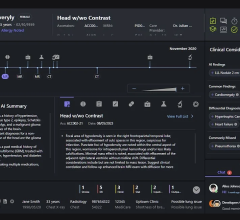May 16, 2024 — deepc, the globally recognized digital medicine pioneer and market leader behind the leading AI operating ...
Artificial Intelligence
This channel includes news and technology innovations for artificial intelligence (AI) software, also referred to as deep learning, cognitive computing and machine learning. AI technology is being integrated in radiology for imaging appropriate use criteria (AUC), clinical decision support, predictive analytics and to assist radiologists with improved workflow.
Having the most efficient clinical workflows with enhanced diagnostic capabilities is a major goal for clinicians and ...
May 15, 2024 — Heart disease is the leading cause of mortality in the U.S., accounting for one out of every five deaths ...
Despite decades of progress in breast imaging, one challenge continues to test even the most skilled radiologists ...
May 14, 2024 — Elekta announced the launch of its latest linear accelerator (linac), Evo*, a CT-Linac with new high ...
May 13, 2024 — Avenda Health, an AI healthcare company creating the future of personalized prostate cancer care, unveils ...
Radiology, once confined to dark rooms with X-ray films hanging from light boxes, has transformed at a rapid-fire pace ...
SPONSORED CONTENT — EnsightTM 2.0 is the newest version of Enlitic’s data standardization software framework. Ensight is ...
May 6, 2024 — ScreenPoint Medical’s Board of Directors has announced the appointment of Peter Kroese as the new Chief ...
May 2, 2024 — A new study from Mass General Brigham has found that large foundation models that incorporate a richer ...
May 2, 2024 — GE HealthCare has announced a new radiation therapy computed tomography (CT) solution with innovative ...
Did you know that approximately one-third of all the data in world is created by the healthcare industry and that ...
May 2, 2024 — Radformation, Inc., a leader in automation solutions for cancer care, announced today that it has acquired ...
Beginning this spring, ITN will begin sending out a bi-monthly survey to our readers on a variety of topics, which we ...
The Healthcare Information and Management Systems Society (HIMSS) Global Health Conference and Exhibition brought ...
Having the most efficient clinical workflows with enhanced diagnostic capabilities is a major goal for clinicians and ...
April 30, 2024 — Use of publicly available large language models (LLMs) resulted in changes in breast imaging reports ...
The rapid growth of healthcare data has reached unprecedented heights, making up about 30% of the world’s stored data.¹ ...
From implementing artificial intelligence effectively, advocating for radiologists, and working tirelessly to expand ...
April 25, 2024 — NewVue Inc., a leader in innovative cloud-native radiology workflow solutions, announced a strategic ...
April 22, 2024 — GE HealthCare announced the launch of the Voluson Signature 20 and 18 ultrasound systems, which ...
April 19, 2024 — Large language model GPT-4 matched the performance of radiologists in detecting errors in radiology ...
April 17, 2024 — VISTA.AI announced the appointment of Daniel Hawkins as President and CEO. The company is pioneering AI ...
April 12, 2024 — GE HealthCare, a leader in breast health technology and diagnostics, will feature its latest breast ...


 May 16, 2024
May 16, 2024 






















